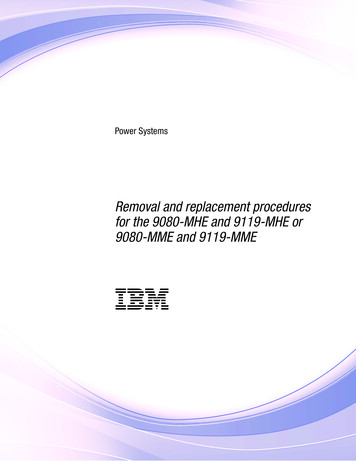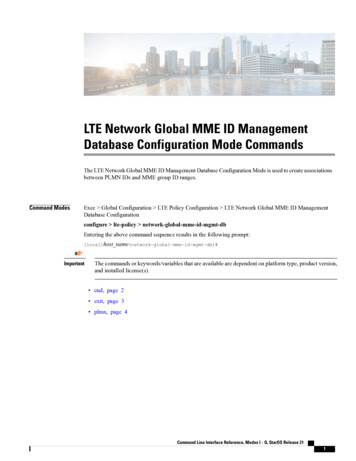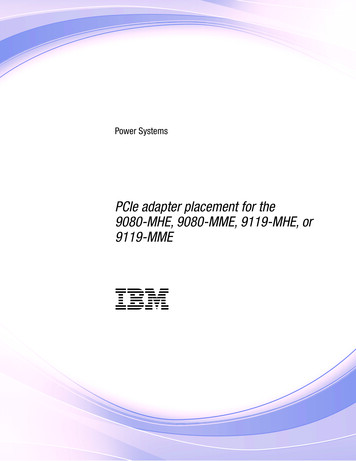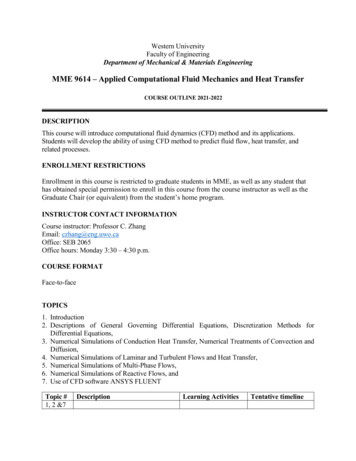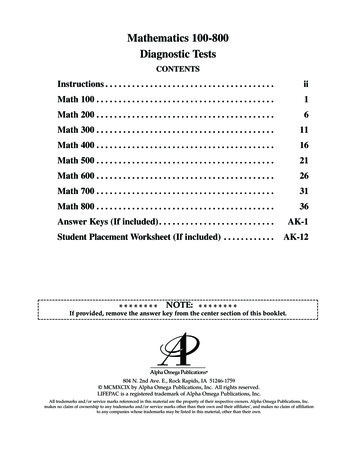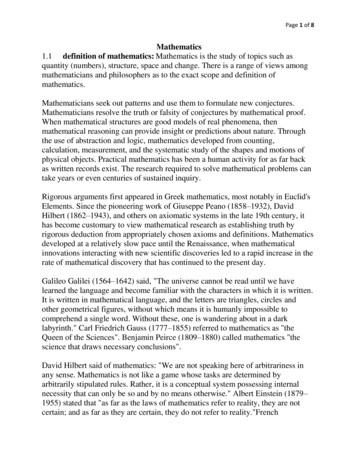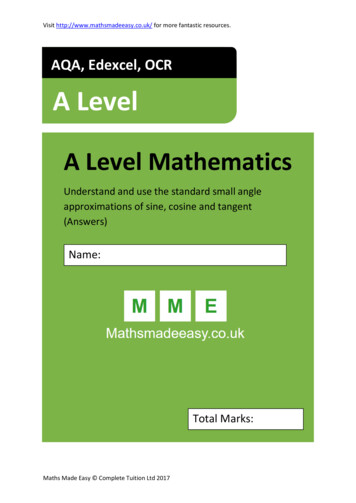
Transcription
Visit http://www.mathsmadeeasy.co.uk/ for more fantastic resources.AQA, Edexcel, OCRA LevelA Level MathematicsUnderstand and use the standard small angleapproximations of sine, cosine and tangent(Answers)Name:Total Marks:Maths Made Easy Complete Tuition Ltd 2017
E2- Understand and use the standard small angle approximations of sine, cosine and tangent - AnswersAQA, Edexcel, OCR1)Sketch and derivate from it the geometric proof for the small angle approximations of sine,cosine and tangent.[1 mark]Begin by sketching a circle with triangle contained within.[1 mark]We can obtain the length of ℎ byℎ 𝑖 𝜃orℎ 𝑎 𝜃as 𝜃 𝑔ℎ 𝑔ℎ𝑔ℎ ℎ 𝑔ℎ 𝑎The length of CD can be calculatedusing 𝜃provided the measurement is inradians.(1)(2)[1 mark]ℎ [1 mark]To obtain an estimate for𝜃Therefore, we can write𝑖 𝜃 𝜃 𝑎 𝜃 𝑖 𝜃 𝜃 𝑎 𝜃 𝜃𝜃 use following the double angle formulacos 𝑥 sin 𝑥where 𝑥 and we use the estimate for sine previously given in (1).𝜃cos 𝜃 sin ( )cos 𝜃 𝜃 ( ) cos 𝜃 𝜃(3)
2)Give the small angle approximations for sine, cosine and tangent of:i)5oii)10oFirstly, convert to radians. Small angle approximations only work with radians. Then usethe rules as you remember them or copy them from the previous question.[1 mark for each correct answer. 6 marks in 08730.99620.087310.00.17450.17450.98480.1745i) Generate a table of the small angle approximations for sine, cosine and tangent of:𝝅 𝝅 𝝅 𝝅 𝝅 𝝅 𝝅,,, , , , , ,𝝅𝟔ii) Then add an additional column and complete the actual values.iii) Plot the actual values against the approximations on a four quadrant axes ranging from 5 to 5 for Approximation (x-axis) and Actual (y-axis).iv) Calculate the mean absolute percentage error for sine, cosine and tangent.[1 mark for each correctly completed table for approximations- 3 max][1 mark for each correctly completed table for actual values- 3 max][1 mark for each correctly completed table for % error- 3 826834320.50.7071067810.86602540411.22515E-16MAPE% Error0%0%1%1%2%8%18%57%314%45%]
17-1MAPE% 91920.3249196960.4142135620.57735026911.732050808% Error0%1%1%2%5%21%68%-1.22515E-16MAPE314%52%[1 mark for each graph drawn correctly – 3 max][1 mark for correct n23
4)A function machine takes two small angle approximations and multiplies them together.𝒐Jack puts in 𝐢𝒐and 𝐜𝒐. Jill puts in 𝐢and 𝐚𝒐. Show who ends up withthe largest answer. Do not use a calculator. You may work using two decimal places.Firstly, convert to radians. Small angle approximations only work with radians. Then usethe rules as you remember them or copy them from the previous question.The rules are𝑖 𝜃 𝜃𝑎 𝜃 𝜃cos 𝜃 𝜃[1 mark for each row correctly completed- 3 max]The values 0.16110.191986218[1 mark for correct answer]Jack’s answer is. .Jill’s answer isJack’s answer is largest.5)Approximate the value of 𝑨 i)[1 mark]𝐜𝑨𝝅. . .with the formulas:cos 𝜃 𝜃 sin ( )𝜃 ( ) cos 𝜃 𝐴 [1 mark]cos𝜋 𝜃 sin 𝐴 sin𝜋 Tan0.98720.19 .cos 𝜃 Cos𝜋𝜋
ii)[1 mark]𝐢𝑨𝑖[1 mark]𝐴 𝑖𝜋 tan(2A)𝜋 𝜋𝐴𝜋 𝜋 𝜋𝐴𝜋𝐴 iii)𝑖 𝜋 𝜋[1 mark]𝑎[1 mark]𝜋𝑎𝜋 𝜋 iv)𝑎 𝐴 𝑎 𝐴𝐴 sin(A)cos(A)tan(A) 𝜋𝜋[1 mark][1 mark]𝑖𝐴𝐴 𝑎 𝐴 𝜋𝜋 𝜋𝜋𝜋
6)Your manager wants to save time but be accurate. You are allowed a 2% error in yourapproximations otherwise you must find the precise value. For 𝐢i)𝒙 :What integer angles, in degrees, would you not be allowed to approximate? Writeyour answer as an inequality.This requires a little trial and improvement.And results in the answer𝑥 𝑜The derivation of that answer is shown in the table below.[1 mark to establish between 13 and 14][1 mark for correct inequality]Actual 𝐢 𝑬 𝒊 𝒂 𝒆 𝑨𝒄 𝒂 𝑨𝒄 𝒂1.95692351𝒙DegreesRadians(and 3725ii)You are required to work out all the integer values of 𝐢𝒙 from 1o to 100oApproximations take you 5 seconds, calculations take you 15 seconds, how longwill this task take in total?[1 mark]𝑇𝑖 iii)If you were offered the swap to 𝐜 𝒙 or 𝐚[ 1 mark each for statement about tan and cos- 2 max] 𝒙 , would you? And why?Tan is the easiest to calculate first as the estimates are the same as Tan. In this instanceonly the first 9 degrees are within a 2% error, meaning a longer time to work them out.Similarly cos also takes longer as only the first 9 degrees are within the 2% error, again,meaning it would take longer to calculate them than sin.
Firstly, convert to radians. Small angle approximations only work with radians. Then use the rules as you remember them or copy them from the previous question. [1 mark for each correct answer. 6 marks in total] De grees R ad ian s Sin e C os ine T an gen t 5 .0 0.0873 0.0873 0.9962 0.0873 1 0 .0 0.1745 0.1745 0.9848 0.1745

